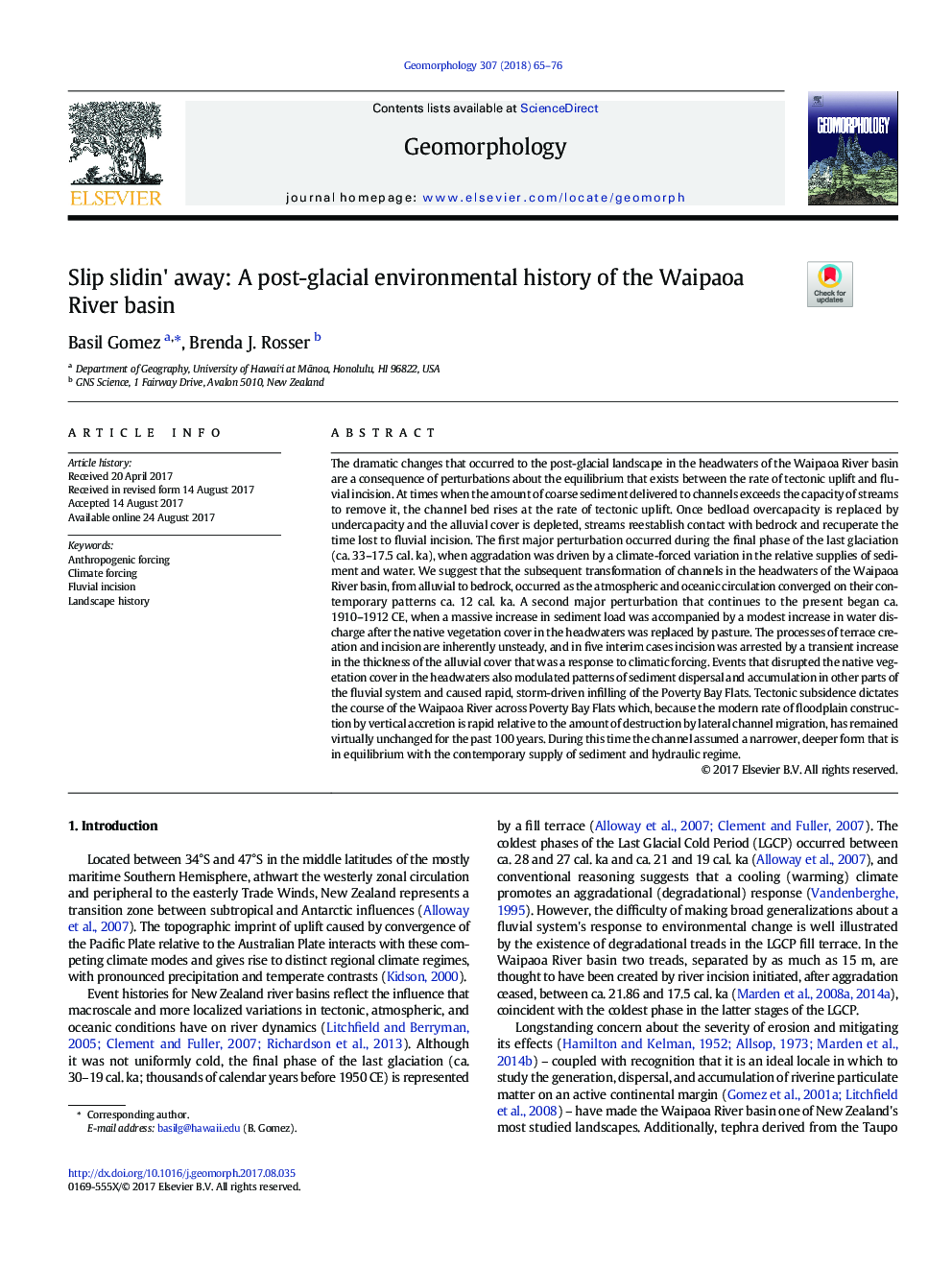| Article ID | Journal | Published Year | Pages | File Type |
|---|---|---|---|---|
| 8908104 | Geomorphology | 2018 | 12 Pages |
Abstract
The dramatic changes that occurred to the post-glacial landscape in the headwaters of the Waipaoa River basin are a consequence of perturbations about the equilibrium that exists between the rate of tectonic uplift and fluvial incision. At times when the amount of coarse sediment delivered to channels exceeds the capacity of streams to remove it, the channel bed rises at the rate of tectonic uplift. Once bedload overcapacity is replaced by undercapacity and the alluvial cover is depleted, streams reestablish contact with bedrock and recuperate the time lost to fluvial incision. The first major perturbation occurred during the final phase of the last glaciation (ca. 33-17.5 cal. ka), when aggradation was driven by a climate-forced variation in the relative supplies of sediment and water. We suggest that the subsequent transformation of channels in the headwaters of the Waipaoa River basin, from alluvial to bedrock, occurred as the atmospheric and oceanic circulation converged on their contemporary patterns ca. 12 cal. ka. A second major perturbation that continues to the present began ca. 1910-1912 CE, when a massive increase in sediment load was accompanied by a modest increase in water discharge after the native vegetation cover in the headwaters was replaced by pasture. The processes of terrace creation and incision are inherently unsteady, and in five interim cases incision was arrested by a transient increase in the thickness of the alluvial cover that was a response to climatic forcing. Events that disrupted the native vegetation cover in the headwaters also modulated patterns of sediment dispersal and accumulation in other parts of the fluvial system and caused rapid, storm-driven infilling of the Poverty Bay Flats. Tectonic subsidence dictates the course of the Waipaoa River across Poverty Bay Flats which, because the modern rate of floodplain construction by vertical accretion is rapid relative to the amount of destruction by lateral channel migration, has remained virtually unchanged for the past 100 years. During this time the channel assumed a narrower, deeper form that is in equilibrium with the contemporary supply of sediment and hydraulic regime.
Related Topics
Physical Sciences and Engineering
Earth and Planetary Sciences
Earth-Surface Processes
Authors
Basil Gomez, Brenda J. Rosser,
